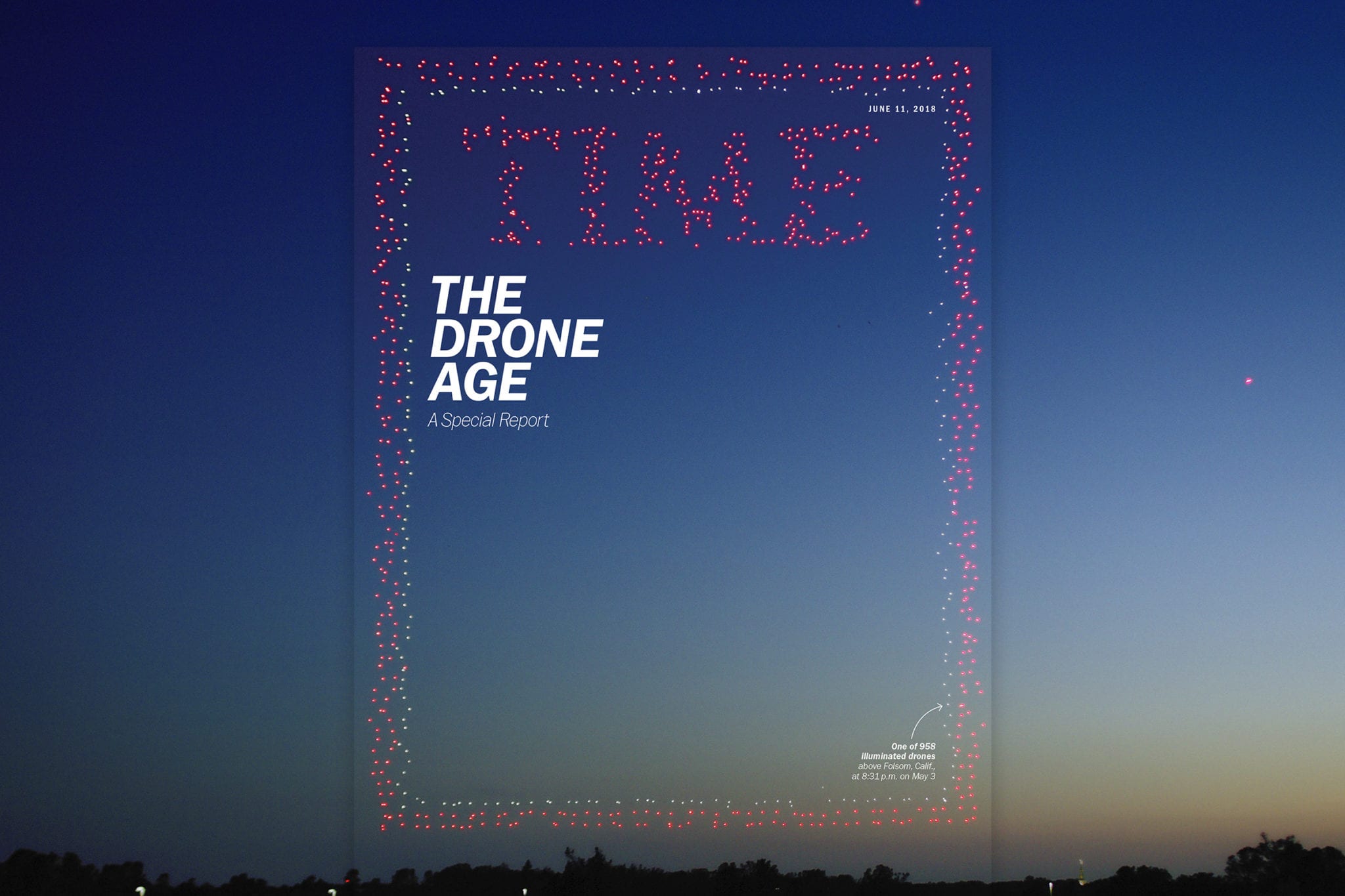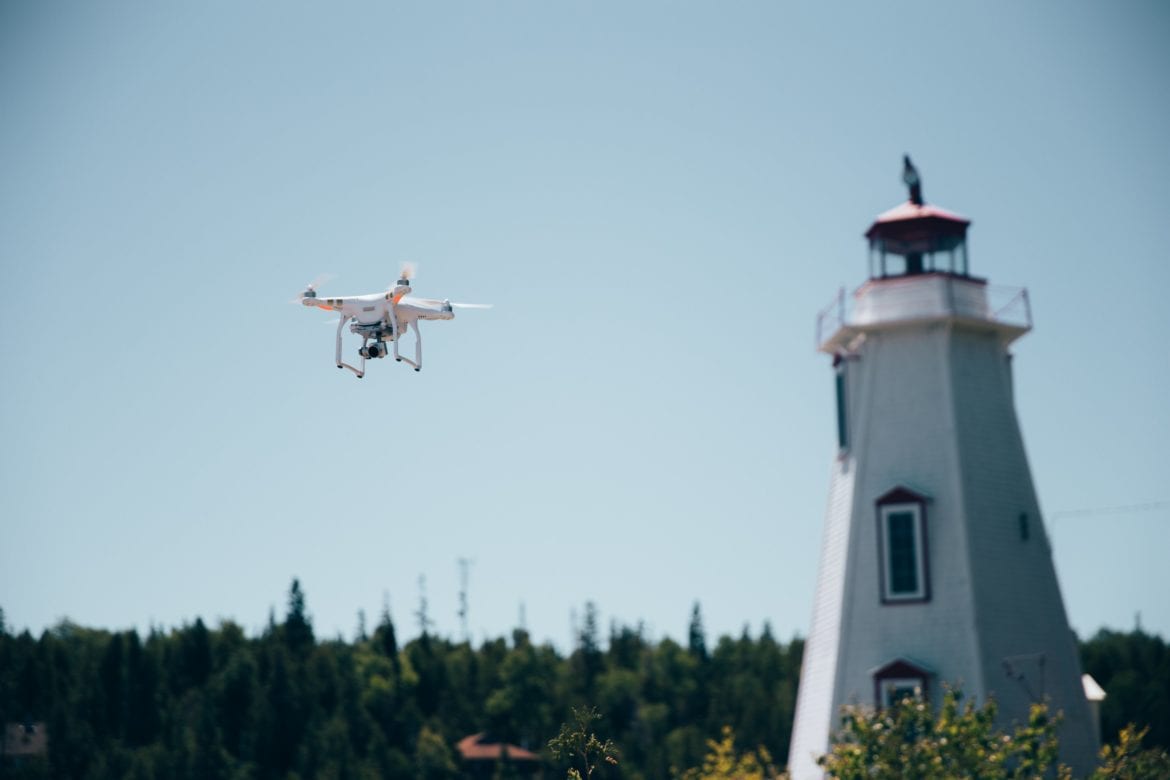|
Getting your Trinity Audio player ready...
|
“Drones Are Here to Stay.”
TIME Magazine declared earlier this year in their Special Report: The Drone Era, adding with uncharacteristic emphasis, “Get Used to It.”
Their lead story focused on how, when Hurricane Maria hit Puerto Rico last September and ravaged the island’s electrical grid and communications systems, the only way it was possible to reach the stranded people and know what was happening on the ground was through a drone— the Flying COW—sent up by AT&T.
Drones are increasingly being used to capture images and video by news agencies and citizen media. Some unique journalism projects—like Unequal Scenes by Johnny Miller, portraying scenes of inequality that are hard to see from the ground—are only being made possible by the use of drones.
“Code for Africa Fellow Johnny Miller has taken photography to new heights, literally,” says Sherry Ricchiardi, an international journalist and media development specialist. “His aerial images of Cape Town’s posh neighborhoods co-existing alongside poverty-ravaged shantytowns is a stunning example of drone journalism’s impact on innovative storytelling.”
To underscore the impact of the coming “drone age,” for the first in the magazine’s 95-year history, TIME created a cover to feature an image captured by a drone. The cover was made by using 958 drones to create the iconic TIME logo and red border in mid-air over California.

Taking news to new heights
“In only a few short years, drones have evolved from paparazzi gadgets to valuable tools helping journalists and news organizations capture and share breaking news stories,” says Kevin Gallagher, President and CEO of Simulyze, a leading provider of operational intelligence and technology applications.
The technology is set to become a mainstream tool in journalism with vast potential applications.
Drone journalism is often being used to cover stories that might go unreported due to difficultly of access or risk of personal injury to reporters. Whether it be capturing snapshots of life at the U.S.-Mexico Border or catching poachers operating under cover of darkness, drones are being employed in larger numbers than ever before.
Around 3 million drones were sold globally last year, and just in the U.S., more than 1 million drones are registered use with the Federal Aviation Administration (FAA).
“For years, drones have been hovering on the cusp—used by militaries and relatively small numbers of hobbyists but not part of the larger culture,” Time’s Alex Fitzpatrick writes. “That’s finally changing.”
With any technology, there are certain
inflection points when it goes from being something perpetually in the near future to being a part of everyday life.
Drone journalism: Opportunities and challenges
Their small size and ability to tolerate harsh environments means drones can monitor situations in places that are difficult to reach—because of altitude, angles and other environmental factors—like over a volcano, or in a war zone.
“Cost-effectiveness is also a key advantage for reporters,” says Kevin Gallagher. “Traditional methods such as renting a helicopter to get aerial images or video were only available to large media outlets due to price.
With the introduction of drones, small operations can capture the same images and conduct the same investigations using a platform which is accessible and pays for itself almost immediately.”
“At a fraction of the cost of traditional methods of aerial reporting such as helicopters, and with tight regulation slowly lifting as public perception improves, drones are fast becoming an essential storytelling tool in newsrooms across the globe,” says the Digital Innovators’ Summit, sharing some of the best of drone-enhanced journalism from across the world, including videos of African wildlife and landscapes, the aftermath of Typhoon Haiyan in the Philippines, the current state of Chernobyl (decades after it was evacuated because of a nuclear meltdown), and the Nazi concentration camp of Auschwitz in Poland, “much more emotive and gut-wrenching than ground-level footage would be.”
Given the advantages of size, cost, accessibility, durability and a whole new perspective, it’s no wonder drone journalism has taken off.
“At least 122,000 people in the U.S. are now certified to fly drones professionally, according to the FAA, which sparked the drone explosion in 2016 when it simplified its process for allowing their commercial use,” reports Alex Fitzpatrick. “Small drones, often between the size of a soda can and that of a mini-fridge, are relatively cheap and easy to fly and can carry a variety of payloads, including high-resolution cameras and thermal-imaging gear.”
Of course, using drones has its own set of challenges, including safety and privacy concerns, and outdated government regulation.
The ethics code for the Professional Society of Drone Journalists (PSDJ) addresses such underlying issues, like newsworthiness, safety, sanctity of law and public spaces and privacy.
There are formidable challenges incorporating drones into journalism, reports Sherry Ricchiardi at IJNet, and the biggest challenge for pilots, she found, is keeping up with the regulatory environment wherever they practice their craft.
Those flying unmanned aerial vehicles (UAVs) — drones — in the United States must pass a Federal Aviation Administration (FAA) test and obtain a permit. Operators must be efficient reading airspace maps, aviation weather reports and safety protocols.
“As journalists we must know where we can use [drones] legally and safely so we can do our job without putting the public, first responders or ourselves at risk,” said Kathleen Duncan, senior video editor for the Reynolds Journalism Institute’s Innovation and Futures Lab, and producer of the video series “Innovation in Focus,” which explores cutting-edge newsgathering methods, technology and tools.
Code for Africa Fellow Johnny Miller noted many African countries require permission from a government source. This is “almost always poorly enforced,” he said, “but when caught you are subject to strict punishment. This is a problem because fair and affordable drone regulations are vital to a flourishing drone industry, journalism or otherwise.”
The National Press Photographers Association, the Society of Professional Journalists, and the Radio and Television Digital News Association have adopted a Drone Journalism Code of Ethics developed by Poynter and its partners, a product of training powered by funding from the Google News Lab. Guidelines in the code include:
- Safety is the first concern. Do not endanger people, animals or property.
- Newsrooms should not encourage others to fly illegally.
- Would you “do that” if you were capturing the image while on the ground?
- Respect privacy.
- Respect the integrity of the photographic moment.
- Do not improperly enhance.
- Newsrooms should recognize that the pilot in command makes the decision about whether a flight can be accomplished safely.
- Drone-journalism pilots in command should not be expected to report or perform other duties while commanding an aircraft.
- Drone journalists have an obligation to hone their flight skills and “stay sharp.”
- Drone journalists have an obligation to be certain their aircraft and gear are in good repair.
Download a one-sheet PDF of the Drone Journalism Code of Ethics
What’s Next?
In spite of all the various difficulties, things are changing fast, especially in the U.S., although challenges abound.
“With the FAA moving aggressively to work with news organizations wanting to use Unmanned Aerial Vehicles (UAS) in those areas, it was a pivotal moment for drones in journalism,” said Matt Waite, from the University of Nebraska Drone Journalism Lab, referring to the recent hurricane season coverage of Harvey, Irma and Maria.
The value argument isn’t theoretical anymore. I’m not talking about what a news organization might do someday. I can point to it. It happened. It’s now a proven tool in the storytelling arsenal.
“I think when I used to describe the gap between the law and the technology the gap used to be pretty great. I would say that things have speeded up significantly on the regulation side,” says Mickey Osterreicher, General Counsel, National Press Photographers Association. “I am pleased that we are moving in the right direction.”
While the use of drones for information collection in the journalism industry is still comparatively new, several universities are testing drones in this context, namely the Drone Journalism Lab at the University of Nebraska-Lincoln, the Drone Journalism Program at the University of Missouri, and the Civic Drone Centre based at the University of Central Lancashire.
They are conducting extensive Drone Journalism lab operations—taking into account current drone regulations, understanding of the public’s acceptance of drones, and the state of drone technologies—with some offering start-up kits designed for newsrooms.
Drones are helping journalists in developing nations too, helping them cover stories in dangerous or hard-to-access areas; for example, the pilot African SkyCAM project funded by the African News Innovation Challenge.
“The biggest hurdle right now is public opinion. As drones become more and more prevalent, the big question is whether the general public gets used to and accepts drones,” says Sally French, known as “The Drone Girl” at thedronegirl.com.
TIME seems to believe that may soon cease to be an issue.
“Like it or not, the sky above is about to become far busier,” it concludes.


